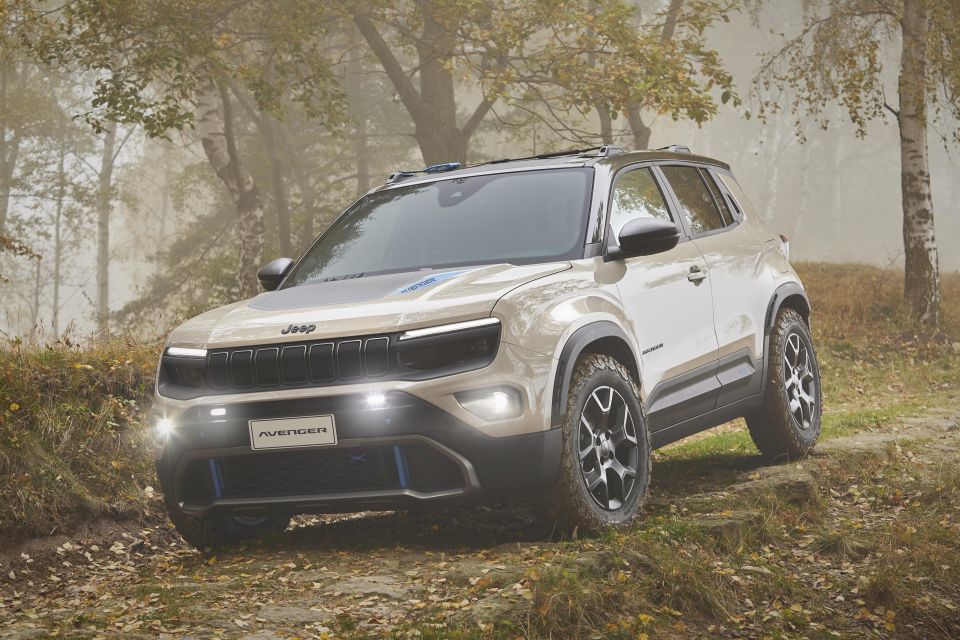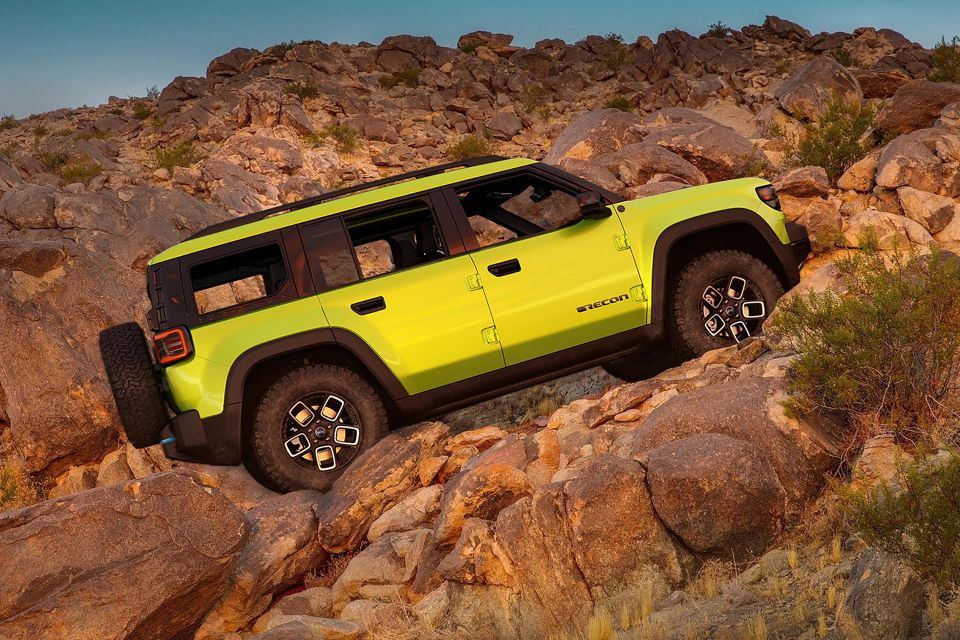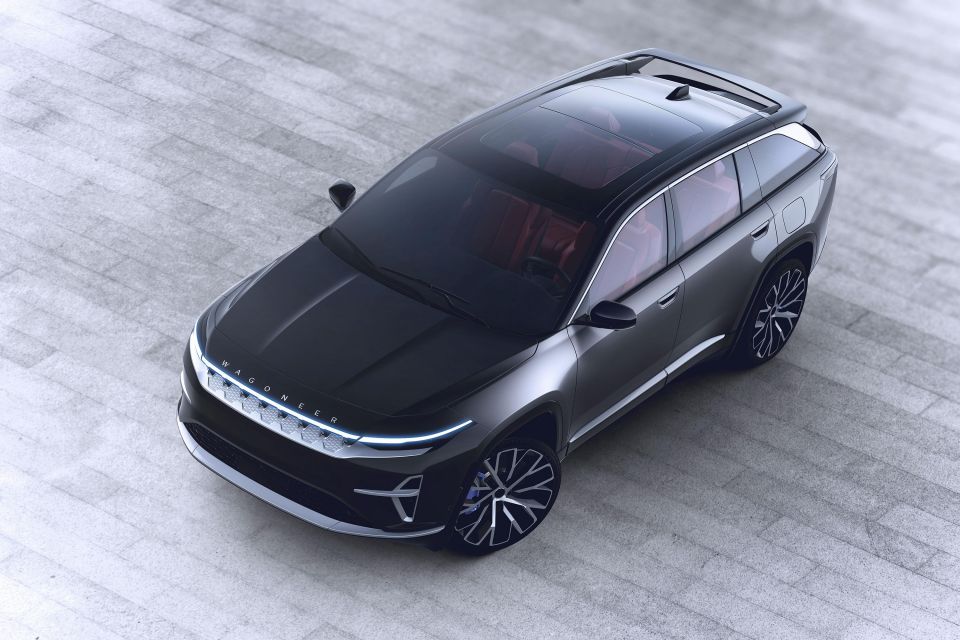

Anthony Crawford
1990 Lamborghini Countach review
6 Days Ago

News Editor
A panel of automotive journalists have crowned the European Car of the Year for 2023, and they picked a Jeep.
The Jeep Avenger, a circa 4m-long crossover with a choice of electric and petrol powertrains, triumphed over the likes of the Volkswagen ID. Buzz, Nissan Ariya and Kia Niro.
It received 328 points and 21 best votes from the Car of the Year jury, pipping the ID. Buzz (241 points, 16 best votes), the Ariya (211 points) and the Niro (200 points).
The shortlist also included the Peugeot 408, Renault Austral, Subaru Solterra and Toyota bZ4x.

Some high-profile new models failed to make it to the shortlist. These included the BMW X1/iX1 and i7, as well as the Ferrari Purosangue, Honda Civic, Jeep Grand Cherokee, Kia Sportage, Lexus RZ, Maserati Grecale, Mazda CX-60, Mercedes-Benz GLC and EQE, Nissan X-Trail, Range Rover, Range Rover Sport, and Toyota Corolla Cross.
Also failing to advance to the shortlist were any Chinese vehicles, with newly launched models including the MG 4 and Ora Cat not making the cut.
The crowning of the Avenger marks the first time a Jeep has even been a finalist in the European Car of the Year competition, let alone the victor.

Søren W. Rasmussen, the president of the Car of the Year jury, called it a “well-deserved winner”, adding: “In a convincing way, it reflects the time the car world has entered, and it radiates with its design the great change that the well-known brand is facing”.
“The Jeep Avenger has proved to be a perfect combination for most uses: it is compact and agile for city use, has enough power and torque to navigate any kind of road, and a good range even for medium-range trips,” said the organisation’s vice president, Alberto Sabbatini.
“Even though it’s just 4.08 meters long, there’s plenty of room inside. It is a complete car, not a city car. But above all, it has a design that rocks.”


The Avenger has yet to be confirmed for an Australian launch, though Jeep Australia confirms it’s evaluating it.
It won’t be offered in North America, with the focus instead on Europe where it’s built. It will roll off Stellantis’ Tychy, Poland production line, along with upcoming entry-level crossovers for the Alfa Romeo and Fiat brands, and will also be exported to markets like Japan.
Measuring 16cm shorter than a Renegade, the Avenger – dusting off a nameplate last seen on a Dodge that was also sold in Europe – uses a version of the CMP architecture underpinning models like the Peugeot 2008.
The Avenger is currently front-wheel drive-only, though it comes with hill descent control, underbody skid plates, and a range of terrain modes including Snow, Mud and Sand. Jeep has also previewed a 4×4 Concept version.

In most markets, the Avenger will come exclusively with a 115kW/260Nm electric motor and a 54kWh nickel manganese cobalt lithium-ion battery.
Claimed electric range is 400km on the stricter WLTP cycle, while the Avenger has a 400V electrical system and supports DC charging at up to 100kW.
In markets like Italy and Spain, the Avenger is also offered with a turbocharged 1.2-litre three-cylinder petrol engine with 74kW of power, mated with a six-speed manual transmission.


Jeep plans to sell only electric vehicles in Europe by the end of 2030, with the Avenger its first EV. The mid-sized Recon and tentatively named Wagoneer S will be next off the rank, entering production in the US in 2024 and confirmed for an Australian launch.
Globally, the company has confirmed it will launch four fully-electric vehicles by 2025, with one expected to be a successor to the Cherokee.
In the meantime, Jeep has been busy expanding its range of 4xe-branded plug-in hybrids. Depending on the market, it now offers electrified versions of the Renegade, Compass, Grand Cherokee and Wrangler, with a Gladiator 4xe due by 2025.
Where expert car reviews meet expert car buying – CarExpert gives you trusted advice, personalised service and real savings on your next new car.
William Stopford is an automotive journalist based in Brisbane, Australia. William is a Business/Journalism graduate from the Queensland University of Technology who loves to travel, briefly lived in the US, and has a particular interest in the American car industry.


Anthony Crawford
6 Days Ago


Matt Campbell
5 Days Ago


James Wong
4 Days Ago


Max Davies
2 Days Ago


Josh Nevett
2 Days Ago


Josh Nevett
22 Hours Ago